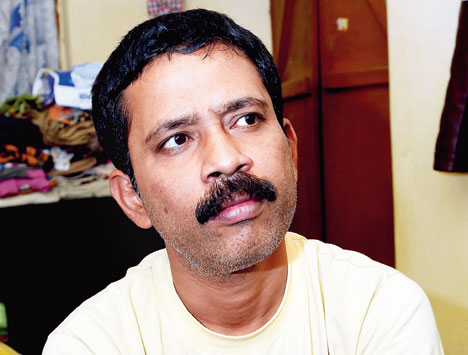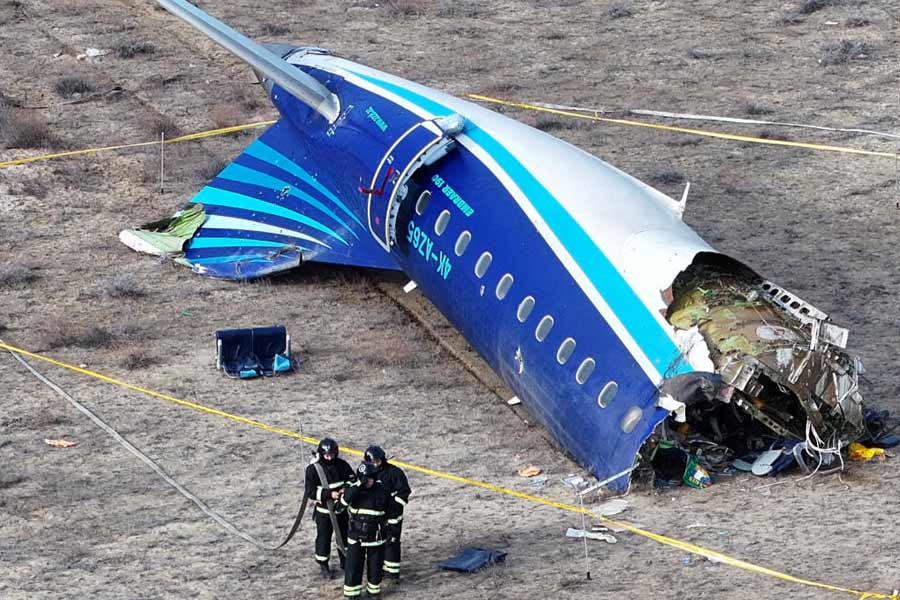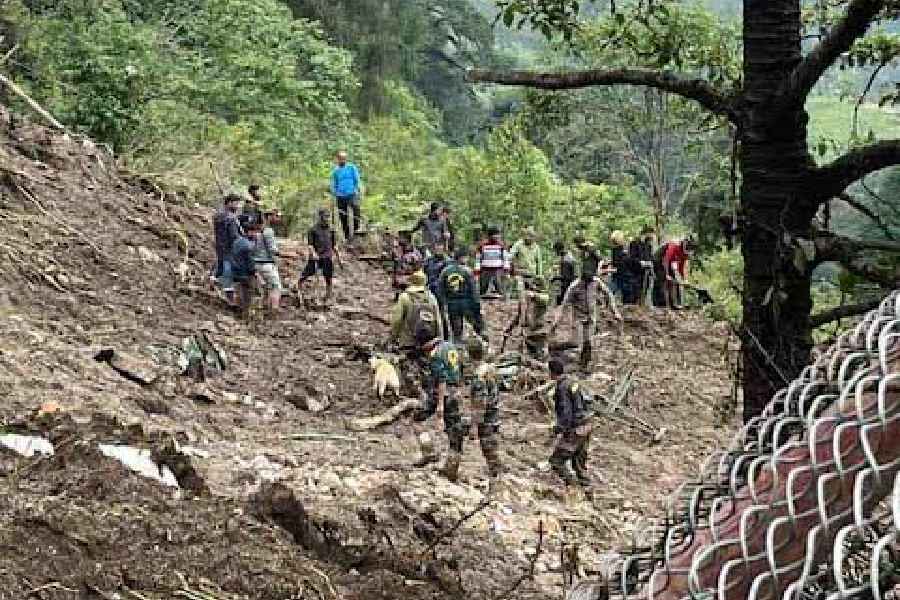
July 25: The Bengal government is gearing up to tackle a flood-like situation in four districts because of discharge of excess water from dams on the Damodar river which is swelling because of heavy rainfall in Chota Nagpur plateau.
"Given the heavy rainfall in Chota Nagpur plateau this monsoon, I think we are staring at a flood-like situation in East Burdwan, parts of Bankura, Hooghly and Howrah districts in central Bengal," said a senior state government official.
Traditionally, inundation in the four districts is caused by the release of excess water from the Maithan and Panchet dams on the Damodar river in the neighbouring Jharkhand. The reservoirs are managed by the Damodar Valley Corporation, a power utility run by the central government.
Bengal is downstream the Damodar river.
Met officials in Ranchi said Jharkhand had received five per cent surplus rain during the current monsoon. Normally, Jharkhand records 467mm of rain from the onset of the monsoon till the last week of July. After today's rainfall, the figure stands at 492mm. There is a forecast of heavy to very heavy rain in the next 24 hours.
"After bouts of heavy rain in Jharkhand, the Maithan and Panchet dams are forced to release water that flows through Durgapur Barrage in Bengal. The water travels downstream spilling the river's banks and flooding villages along its course in Bankura, East Burdwan, Hooghly and Howrah districts. The Damodar finally meets the Hooghly," the official said.
Agriculture department officials fear that if the two dams release too much water in the days to come, large swathes of the agriculturally-rich districts might be flooded. "At least 20 per cent of the total produce of the monsoon crop, which is about 100 lakh tonnes, could be affected if paddy fields are submerged," another official said.
Apprehending the deluge, the Bengal government has ordered the district magistrates concerned to be ready with relief materials. "Starting from arranging boats to keeping dry food and tarpaulin ready - everything has been done. The administration will take appropriate measures if people face trouble," said a Nabanna official.
According to DVC sources, the situation could get critical this year as the water holding capacity of the Maithan and Panchet reservoirs was nearing their maximum levels. "Panchet has a capacity of 425ft, but the water level has already reached the 421ft mark. The Maithan dam can hold water till a height of 495ft. But today, the water level was 463ft. A dam has to release water when the capacity is full. Or else, the reservoir will burst. It is clear that more rain in Jharkhand could engender a deluge in Bengal," said a senior official at Nabanna.
As silting has dropped the capacity of the Maithan and Panchet dams, the water discharge from the reservoirs is bound to exceed further.
Bengal chief secretary, Malay De today called up his counterpart in Jharkhand and requested the latter to be rational while releasing water from Tenughat barrage. Water from the Tenughat barrage flows to the Panchet dam.
The Bengal irrigation department has also written to the DVC with a request to restrict the water discharge at 75,000 cusec.
Sources said about 140,000 cusec of water was released through the Durgapur Barrage tonight.
The flood-like situation downstream the Damodar has become a regular feature over the past few years. The state government and the DVC blame each other for the plight of thousands of villagers every time but a concrete step is yet to be initiated to get rid of the problem.
In 2015, more than 100 blocks were inundated downstream the Damodar in Bengal and the chief minister had alleged that the deluge had occurred only because the DVC had released excessive water without informing the state.
The DVC had denied the allegation.
Bengal irrigation minister Rajib Banerjee blamed the DVC for releasing water without considering the state's request. "We had requested the DVC yesterday not to release more than 10,000 cusec of water. We wrote to the DVC chairman and Central Water Commission today with a plea to stop the discharge," said Banerjee.
Officials at the DVC said they did not release water according to their will. "The Damodar Valley River Regulatory Commission, in which a senior officer of the Bengal irrigation department serves as a member, decides how much water should be released. So whatever discharge takes place, the state government knows it," a DVC official said
Senior government officials feel both the DVC as well as the state government could be blamed for the regular flood-like situations in central Bengal.
In West Midnapore, nearly 100 villages were inundated following heavy rain over the past four days. New areas in the district were flooded today. The Shilabati river spilled its bank and a 2km stretch of the state highway connecting Ghatal town and Midnapore town was flooded.
In Asansol town, the Rail Par Colony was inundated following a heavy shower in the past six days. Water entered parts of Asansol town after the Garui canal spilled its banks.
Sources in the irrigation department in West Burdwan said 109.4mm of rain was recorded in 24 hours till 9pm yesterday in Asansol.











